A Conceptual Application for the Human Hand
Jung’s Model of the Psyche
Carl Jung likely had his palms read by the well known and respected hand reader, Julius Spier. Jung wrote in the introduction to Spier’s palmistry book:
“The totality-conception of modern biology which is based on the evidence of a host of observations and research does not exclude the possibility that hands, whose shape and functioning are so intimately connected with the psyche, might provide revealing and, therefore, interpretable expressions of psychical peculiarity, that is, of human character.”
Jung was very impressed with Spier’s reading of hands and spoke highly of his work and Spier’s gift. He wrote, “I have had several opportunities of observing Mr. Julius Spier at work, and must admit that the results he has achieved have made a lasting impression on me. His method, though predominantly intuitive, is based upon a vast practical experience. Experiences of this kind can be rationalized to a great extent, that is to say, they admit of reasonable explanation once they are available. The manner, however, in which they are obtained depends, apart from routine, in its most decisive points, upon a subtly differentiated creative intuition which in itself implies individual specific talent.”
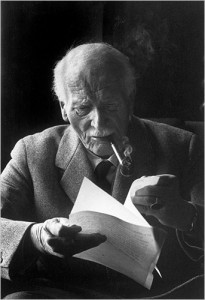
After three decades of reading hands and studying everything about hands, I understand and agree with Jung’s description. The intuitive aspect is the ability to connect the dots and give coherence and meaning to the creases on the palms, the flow of the fields of ridges (or dermatoglyphics), and every aspect of the structure and function of the hand itself. It takes years of practice for a hand analyst to reach the level where knowledge and intuition blend creating a profound multidimensional model of one’s personality, behavior, boundaries, pleasures and preferences. A model of our psyche is hiding in the palms our hands.
Oh to have been a fly on the wall to observe Carl Jung having his hands read by Julius Spier! Can you imagine how he must have felt hearing the story of his own psyche as revealed in his hands? Spier’s book “The Hands of Children” was published in 1944, so I’d need a time machine to take a trip into the past to look through the many facets of the fly’s eyes. Jung said “All the works of man have their origin in creative fantasy. What right have we then to depreciate imagination.” So come along with me into my creative fantasy world and let’s take a look at this concept of how Carl Jung may have associated what Julius Spier was communicating to him about himself from his hands.
“Who looks outside, dreams ~ who looks inside awakes.” – Carl Gustave Jung
Below is a graphic I have prepared for illustrating how to apply “Jung’s Model of the Psyche” to the hands.
The Outer World is the external world of objects and other people. The radial or thumb side of the hand has long been associated with our outer self. The thumb represents our individuality and our sense of self or ego that we have the strength and courage to present to the world outside of ourselves. The Outer World includes our public life and our relationship to the people and situations that can lead to our own personal advancement. With our index fingers we direct other people’s attention toward objects in the external world.

Our Persona is our protective mechanism, our outer masks we display as our public image or the face we are willing and able to show to the world. This outer face protects the many layers beneath which can be peeled away like an onion as we move deeper and deeper into our more hidden aspects of our self and into our Shadow side. In my model I have placed the Persona as a gray veil covering the entire palm. The darker the shades of gray, the more hidden, protected and mysterious are the stories buried there. Our outer self is covered with the thinnest veil, as this area represents the image shaped for ourselves by ourselves, our experiences, and the environment that we wear on the outside for all to see.
“So far as we know, consciousness is always Ego-consciousness. In order to be conscious of myself, I must be able to distinguish myself from others. Relationship can only take place where this distinction exists.” – Carl Gustave Jung
The Ego forms the center of Consciousness. Some hand analysts have assigned the Ego to the thumb itself. I often say to people in readings, this is your ego, your sense of self, and how you put your self out there. Others have assigned the Ego to the index finger. The Ego is the part of your self that refers to itself as “I”. Such as “I am happy.” Jung wrote that the Ego is “the complex factor to which all conscious contents are related. It forms, as it were, the center of the field of consciousness; and, in so far as this comprises the empirical personality, the ego is the subject of all personal acts of consciousness.” Because this central position in the field of consciousness connects with the whole spectrum of awareness via the senses, the Ego is shown as the thumb’s relationship primarily to the index finger, and as well its opposing nature to all the fingers. Our individuality is illustrated in the uniqueness of each fingerprint and the impression it leaves on all that we touch. The permanence of these prints could symbolize the need for our having an Ego as the physical body is a home to our soul.
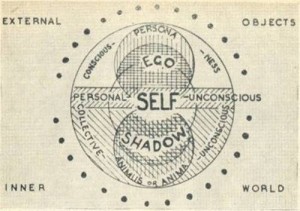
Our Consciousness is our awareness through our senses and how we process the information continuously exchanged with our outer world. We touch the world through our fingers. The index fingertip has more nerve endings than any of the other fingertips and is more sensitive to touch. Our sense of touch involves so much more than just feeling the physical texture of our environment. We pick up vibration, pressure, feel heat and cold, wet and dry, soft and hard, and sense energies yet to be observed or fully understood by science. It makes good sense (pun intended) to associate the fingers and the thumb with Consciousness. The mounts below the fingers blend the Consciousness into the central Self.
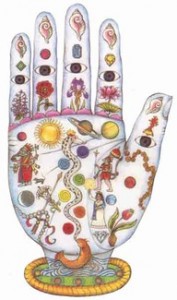
We comprehend the world through our own Personal Unconscious as responses, preferences, inclinations, viewpoints and opinions. Our own individual and unique ‘rose-colored-glasses’ we wear on our egos. The Personal Unconscious provides us with the capacity for empathy in its connections through the self with the Inner and Outer Worlds and the Conscious and the Collective Unconscious. It is the place where things forgotten surface from the subconscious and appear in the conscious.
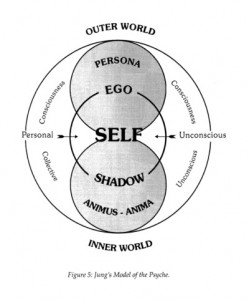 “As an empirical concept, the Self designates the whole range of psychic phenomena in humans. It expresses the unity of the personality as a whole. … It encompasses both the experienceable and the inexperienceable (or the not-yet experienced)” – Jung
“As an empirical concept, the Self designates the whole range of psychic phenomena in humans. It expresses the unity of the personality as a whole. … It encompasses both the experienceable and the inexperienceable (or the not-yet experienced)” – Jung
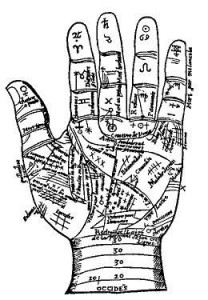
Existing in the realm of the Collective Unconscious we find our most primal and instinctive urges and drives. Here we find our Shadow and the Anima or Animus. Forces that rise from deep within ourselves. New discoveries in science relating to genetics and epi-genetics show how the experiences of our ancestors are passed down through our genes. Sometimes from deep within our essence we feel a sense of some kind of just out of touch reason for our actions and impulses. Something we just can’t put a finger on. Other times we feel a strong connection to our roots, our ancestors, our tribe. This place just beyond conscious reach is the Collective Unconscious.
“How can I be substantial if I do not cast a shadow? I must have a dark side also if I am to be whole.” – Carl Gustave Jung
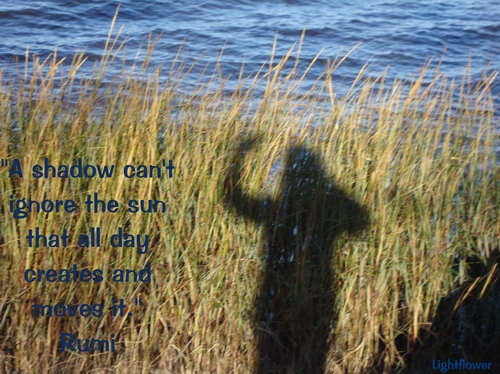
As we pass through the Self we move into our deeper and darker nature. Next on our journey inwards we meet the Shadow. Our Ego is the polarity of our Shadow. Our Ego is the image we project through our Persona and our Shadow is what we wish to conceal. We leave the territory that determines our ability to compromise our preferences, our level of openness, and enter the realm of the inner self. Our Shadow is easiest to see in the things we least like in others. The Shadow side of our selves resides on the Collective Unconscious side of the hand and in the Inner World beyond the Personal Unconscious. The hypothenar area contains mounts that in palmistry relate to restraint, reflection, insight, imagination, intuition and transformation. Polarities exist here such as daydreams and nightmares, insight and confusion, imagination and hallucination, stamina or submission, illusion and reality.
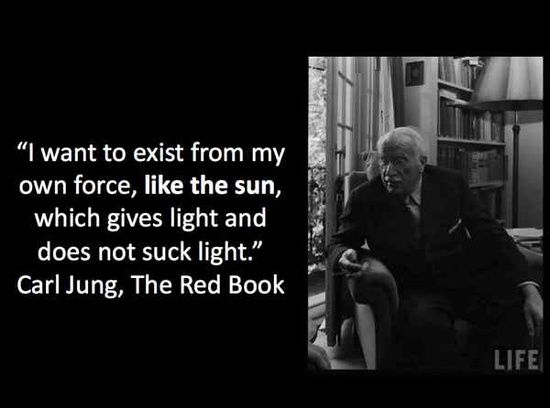
The Anima or Animus resides in the more instinctive zone moving into the realm of the Collective Unconscious. The woman in the man and the man in the woman. Our other half may be inside of us all along while we seek to find ourselves with another. We often look for qualities in others we lack in ourselves. The thenar area of the palm indicates our vitality, our libido and in general our physical energy. If this area is weak we have little energy or desire to accomplish our goals and fulfill our dreams. When it is full and healthy, our energy abounds. The more energy we have for ourselves, the more energy we have to share with the Outer World. The Anima is said to be a force that maintains connections in families and can also be related to how we transfer or project qualities onto others that are not their own.
“When the yin and yang are balanced, the personality is integrated. In the personal unconscious, the undifferentiated or unassimilated opposites of personality are projected: a man’s anima, or hidden feminine aspect, will be represented in the unconscious by feminine anima images; vice versa, a woman’s animus, or hidden masculine aspect, will be represented in the unconscious by masculine images.” (Astronomy, Alchemy, and Archetypes: An Integrated View of Shakespeare’s A Midsummer Night’s Dream – Katherine Bartol Perrault )
The Inner World contains an illusive but Conscious doorway to the Personal Unconscious Self, the Shadow, and beyond; stretching into the space where illumination, transformation, and transcendence are sought and sometimes discovered in profound experiences. The Inner World contains the ring and little fingers and the ulnar side of the hand. Research has shown that the ring finger represents energies behind risk taking and adventure loving activities. The little finger also known as the auricular finger, has several archetypes. Best known is Mercury, the wing footed, mythological messenger of the gods, also known as Hermes, there’s the Trickster, and then there’s ever mischievous Cupid. “Love looks not with the eyes, but with the mind, And therefore is wing’d Cupid painted blind…” – Shakespeare “The Midnight’s Summer’s Dream”. Cupid doesn’t need light to see in the Inner World. Here in the area most hidden by our Persona is where our darkest secrets reside, the place where we learn to listen, share, and nurture ourselves and others.
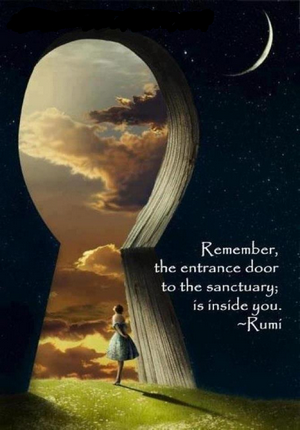
The map of the hand can be simplified by visualizing both a vertical and a horizontal division on the palm side of the hand. The location of this mid section in each division is really a blending of the polarities from one energy field to the other. It has no exact boundaries and is located in a general central location unique to the individual. Our outer worlds can extend as far outside ourselves as we can imagine and equally into the depths of our soul, our inner world, in the Jungian world of paradox.
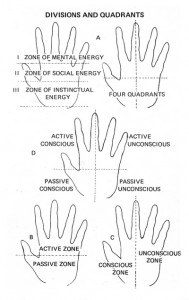 Judith Hipskind’s diagram from the book “Palmistry the Whole View” illustrates similar divisions which can be seen in the examples above. Hipskind has divided the hands into vertical and horizontal sections along with a division of three realms or zones. She writes, “With the zones, a theory which is used in other studies of man applies very nicely to the hand. This concept, which is a direct expression of man’s need to structure reality into various categories of functions, involves the age-old notion of a heaven, an earth, and a hell. These categories have their parallel in the psychological terms, ‘superego’, ‘ego’, and ‘id’.” Her zone of Mental Activity (superego) is easy to associate with Consciousness and the bottom of the hand, the Zone of Instinctual Energy (id) as the Collective Unconscious, and with Self(ego) in the middle between the two as Social Energy. The fingers are more actively involved dabbling in things of the world and the wrist is like the truck of a tree leading to its roots. In her graphics, the outer world relates to the conscious zone and the inner world to the unconscious zone.
Judith Hipskind’s diagram from the book “Palmistry the Whole View” illustrates similar divisions which can be seen in the examples above. Hipskind has divided the hands into vertical and horizontal sections along with a division of three realms or zones. She writes, “With the zones, a theory which is used in other studies of man applies very nicely to the hand. This concept, which is a direct expression of man’s need to structure reality into various categories of functions, involves the age-old notion of a heaven, an earth, and a hell. These categories have their parallel in the psychological terms, ‘superego’, ‘ego’, and ‘id’.” Her zone of Mental Activity (superego) is easy to associate with Consciousness and the bottom of the hand, the Zone of Instinctual Energy (id) as the Collective Unconscious, and with Self(ego) in the middle between the two as Social Energy. The fingers are more actively involved dabbling in things of the world and the wrist is like the truck of a tree leading to its roots. In her graphics, the outer world relates to the conscious zone and the inner world to the unconscious zone.
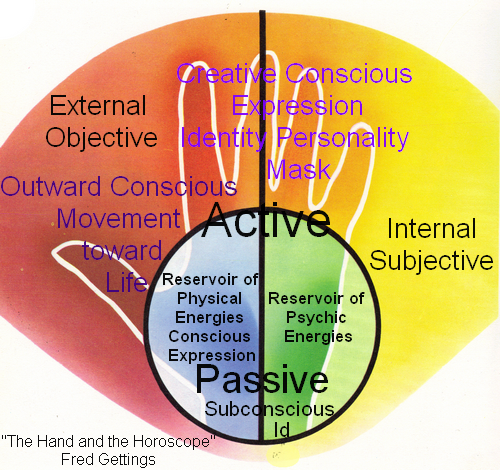
Fred Gettings wrote in his book “The Book of the Hand” (1965) “C. G. Jung is one of the few modern investigators to have recognized the importance and basic truth of the four-fold classification handed down to us from ancient times.” Gettings describes the fingers as Creative Conscious Expression with particular emphasis on the ring finger. The Active Zone represents the fingers and also the area beneath the fingers, the mounts. The Passive Zone is toward the bottom of the hand and contains the Subconscious and the Id. Reservoirs of Physical Energy are found on the lower radial side of the hand. The upper radial side of the hand according to Gettings is related to “energy made explicit and given form”. Psychic Energy fills the reservoirs on the lower ulnar section. The upper ulnar section contains the little finger and Gettings says, “Mercury rules the rapid externalization of that which is held in the subconscious reservoir.” and the “expressions of emotions and thoughts”.
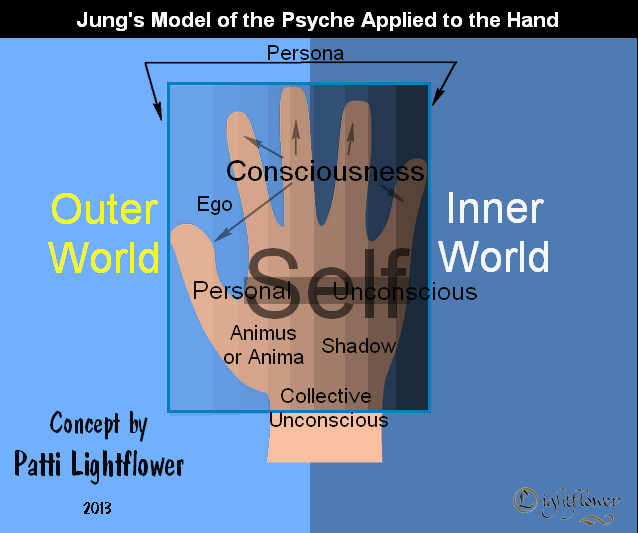
It is fascinating to see that the formula of Jung’s Model of the Psyche fits like a glove with the basic ideas of Palmistry and how the hand has long been analyzed and interpreted to describe and explain human existence. In the near future we’ll explore symbols, alchemy and archetypes and look at how they have been assigned to the various digits and mounts.
Special thanks and deep appreciation goes to Liz Hallows of Handscapes for her passion for Jungian theory and hands. Her inspiration and motivation opened the Jungian doorway of my Psyche and beyond. Thanks also to those that inspire me through their debating and sharing of concepts and viewpoints.
Link to sketch of Carl Jung’s right hand.
in joy and peace,
Patti Lightflower
Reading Suggestions:
- “Living with Paradox” Anne Singer Harris
- “The Hands of Children” Julius Spier
- “Palmistry the Whole View” Judith Hipskind
- “The Book of the Hand” Fred Gettings
- “The Archetypes and the Collective Unconscious” C. G. Jung
- “On Divination and Synchronicity” Marie-Louise Von Franz
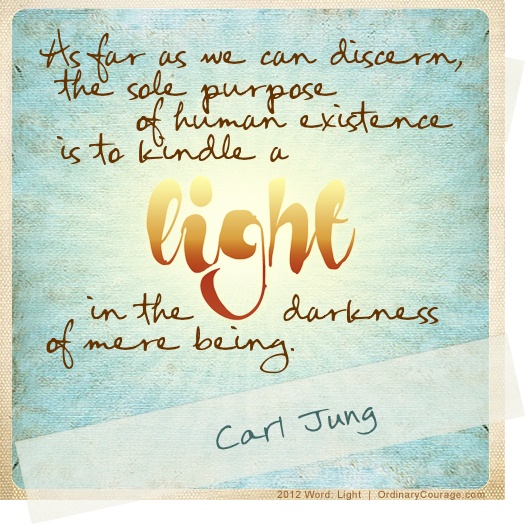

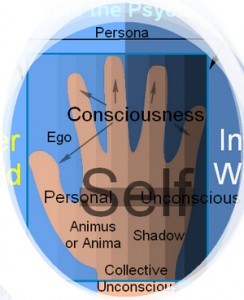
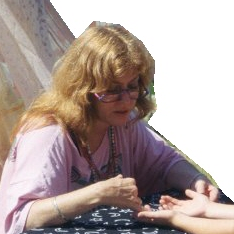
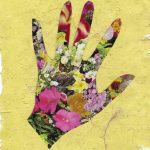
Hi Patti,
nice article.
I am not very familiar with Jung’s theories. But, I could relate many things in this with the Jung’s concepts(which I understand). The article is very influential in understanding how knowledge and intuition are blended in this field and how deeply the hand is associated with Jung’s model. Would look for more of such articles from you and Liz Hallows.
Thank you Kiran! I truly appreciate your feedback especially since I’m aware of how you also approach hand analysis in a similar fashion in regards to psychology.
What a brilliantly lucid article, Patti!!! Love it. I’ve read many summaries of Jung’s concepts, and that has to be one of the best. Also beautifully integrated with palmistry – you’ve just added another layer that brings so many things together and makes sense of them. The only thing I don’t quite follow is locating the shadow in the lower ulnar area. I’d have thought it spans the entire subconscious, including the radial side. An example could be what you mentioned about projecting qualities onto others that are not their own. These projections are very often generated by our own shadow, like someone who is subconsciously bitter and enjoys others being cut down to size hearing cynicism in everybody else’s remarks.
Thank you Romy! What excellent feedback! I’d love to think out loud about the shadow across the entire subconscious.
The projections from Anima/Animus I thought were an odd association, too. Best I could place it was the dysfunctional stuff that runs in families.
It seems the shadow is something we consciously choose to hide plus those things we’re in denial about. And stuff that rises from here (hypothenar) is more intuitive, psychic, dreams, visions. Stuff that comes into the soul and mind in a spiritual, ethereal way.
Whereas the thenar and it’s energies feel more rising from the gut, more physical and primal. Survival may be more related to here than the hypothenar as the hypothenar is more related to out-of-body experiences anyway – so it may not care about losing the physical. Yet the thenar is more about reproduction – desire – vitality – virility.
My reasoning was that the hypothenar drew from the collective unconscious and the inner world areas and was about the expansion of the Self spiritually. The thenar would then represent the expansion of Self out into the world materially and reproductively. Perhaps the reproduction part is related to ‘keeping families together’.
As to archetypes, I felt they were the next layer and part of the Persona, Ego, Shadow and Anima/Animus. I think the mounts are archetypes, but I’m not sure I’d label the creases as such. They’re more like the scribes recording life in their rivers of energy. The archetypes seem like the gods in the bicameral mind in Julius Jaynes idea of consciousness.
Thanks so much for your encouraging and kind words Romy, and I’d love to hear more of your thoughts about this.
Hi Patti
I was glancing through your info. Hope things are good. I have a question, where exactly would the middle finger fit, it looks it has lot of work of balancing all the information. Should it be the inbetween zone.
Anand
That’s a good point Anand! Thank you for bringing it to my attention. I hadn’t realized that I had mentioned all the other digits except for the middle finger. Here it would be a sort of bridge between the Inner and Outer Worlds and in the middle of Consciousness. Some professionals have divided this finger down the middle and see it as involved in both worlds. In another article I’ve written here in my blog, under the tab Basic Guidelines, there is a graphic showing the wiring from the brain to the fingers. These connections are interesting to study to see which fingers are working together in the mind-body communications.
🙂
Hi patti
Nice article well written and it is worth reading this article, lot of information. Congrats
Anand
Thank you for your kind words Anand!
Hello PAtti
From the way iam able to understand this article, it looks like the subconscious (The input from where we receive information to send to the radial side, it also depends upon middle finger) seems to play a bigger role in the decision making process of life or your day to day activities. Also how would model encompass the left hand and right hand concept when some books mention it right is active and left is passive and some day to day activities are right and left personal side.
Anand
I don’t expect the application of Jung’s Model of the Psyche to cover individual aspects or features of the hands. Rather, it’s more of an overview of the energy fields and their general territories. With that said, the middle finger in general relates to things like responsibility and conscience. It is located in the mid point between the outer and inner worlds so would have the influence of, as well as influencing, both. Some think the words conscious and conscience come from the same source.
I totally agree that non-dominant and dominant hands play a role. I see the non-dominant hand as a deeper more personal and private form of the dominant hand. Same map is overlaid, but the the indications are more related to the personal life. I do not read the non-dominant hand as the what you were born with and the dominant as what you’ve accomplished. You come in with both hands and both reflect where we are in life now.
Hi Patti
I dont think conscience and consciousness are same. Consciousness is awareness and typically a high degree pf conscience would imply you would do only good not somethingh wrong, is what i have understood from conscience.
It is very interesting where you have mentioned non dominant as more private form of the dominant hand. So from the way i understand the subconscious in non dominant will have a major role to play to get deeper insights of the person.
I think the subject is interesting when discussed in this way as it makes me think more and ask more questions.
Anand
Hi Anand, I didn’t mean to imply that conscience and conscious were the same thing. They come from the same Latin word conscius and relate to “with” and “to know”.
It is interesting however, to find the finger of conscience (behaving with knowing – perhaps knowing of consequences) as the middle digit of balance between inner and outer self and located in the zone of Consciousness.
I find this as complementary when viewing Consciousness represented by the digits and the mounts under the fingers.
Know what you said makes sense, the action of being aware of could be treated as conscience for which responsibility takes ownership off.
That is interesting.
Anand
Hi Patti
I was thinking about the little finger where books mention communication and urges but don’t you think it is contradictory as communication, sex ect.. are more on the conscious side and not subconscious.
Anand
Anand,
I don’t know that authors of palmistry books in general attribute the little finger to urges. I don’t attribute urges to the little finger. Communication is a form of self expression. Relationships are the various connections we form with others. These are both related to conscious and subconscious thoughts and feelings. For example, you have probably heard the phrase “slip of the tongue” which usually means we say something that rises from a more unconscious level that gets blurted out unintentionally. Or a ‘Freudian slip’.
In this particular model, it wasn’t my intention to assign meaning to the digits. It’s more of a psychological overlay of the layers and levels of the psyche in Jung’s model as I would place them in the hands based on how I do readings.
Lot of times I get confused by various terminologies authors put and add various to fingers
Hi Patti
Iam not sure which book but probably jaegers she had mentioned ID (primitive) to Little finegr, let me verify that and i will let you know. But still when i look at the way you have shown the holistic view it owuld be difficult to categorize which finger to what except the middle finger.
Anand
Thanks for your comments on my blog. The ‘holistic’ overlay is my only intention in this particular subject. I don’t plan to match the Jungian model to digits individually. I placed all the digits in the conscious area. I have seen where other authors have assigned things like the persona or ego to the ring and index fingers, or even the thumb, but I find that too simplistic in that it gives a far greater ‘meaning’ to a digit than it deserves, while missing a greater representation in the whole hand.
I have been writing in other areas of this blog in more depth about the territories of the hands and plan to share my thoughts about the digits soon.
🙂